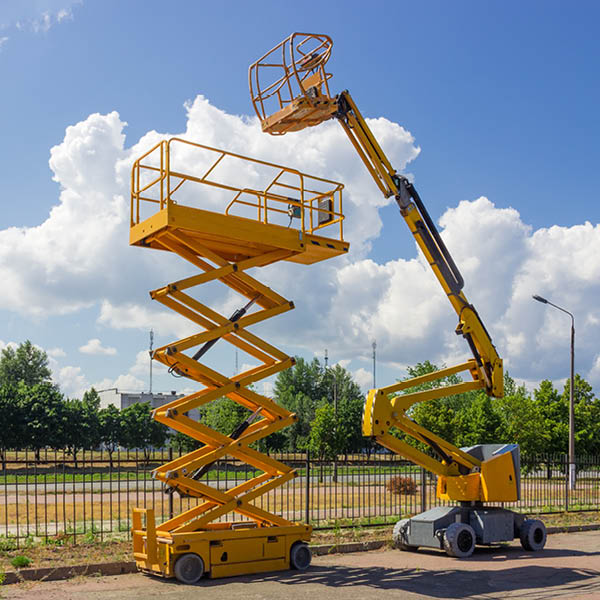Boom Lift vs Scissor Lift: Which One Do You Need?
Boom Lift vs Scissor Lift? While scissor lifts and boom lifts both provide access to elevated work areas, the two machines move differently and serve different purposes. Each has its strengths and ideal applications, so understanding the difference can help you make the right call for your project. Choosing between a scissor lift and a boom lift ultimately depends on the nature of your project and the limitations of your worksite.
Basic difference between Boom lifts and Scissor lifts
Boom lifts elevate workers in a small bucket or compact platform using a hydraulic lift system, moving both horizontally and vertically. Scissor lifts, on the other hand, are more compact and make an excellent choice when you need to go straight up. You might want to use a scissor lift rather than a boom lift in situations like these:
- Lifting containers to a higher shelf or removing them from a warehouse.
- Washing windows on the side of a building.
- Lifting workers on job sites with rough terrain.
- Elevating multiple workers and bulkier material.
Start With Your Workspace
Scissor lifts are excellent when you need to go straight up in a stable, vertical line. Think of ceiling repairs, installing signage, or routine maintenance in a warehouse or indoor commercial space. They’re also well-suited for flat, open outdoor worksites. Boom lifts, on the other hand, provide both vertical and horizontal reach. That makes them the go-to for projects where you need to extend over obstacles, such as tree trimming, utility work, or accessing high façades.
How Much Reach Do You Need?
If your project only requires straight-up elevation — say, 20 to 40 feet — and you’re working on a solid, level surface, a scissor lift is likely the most cost-effective and efficient solution. But if you need to go both up and out, a boom lift offers more versatility. Articulating boom lifts can bend around corners, while telescopic booms provide extended straight reach.
Manoeuvrability And Access
Scissor lifts tend to be more compact, which makes them easier to manoeuvre in narrow indoor spaces or between shelving units. Boom lifts often require more clearance but are better suited for reaching tough angles or working around large structures. Four-wheel drive models are available in both types, but boom lifts are generally better on rough terrain.
What Are You Lifting?
Load capacity is another factor. Scissor lifts typically have larger platforms that can hold multiple workers and tools. This makes them ideal for jobs like ductwork installation or multi-person maintenance. Boom lifts usually have smaller baskets, designed for one worker plus tools, with a focus on reach rather than volume.
Checklist: Choosing the Right Lift
Choose a scissor lift if:
- You’re working on flat, stable ground
- You need to lift multiple workers or tools
- Your task is vertical with no obstructions
Choose a boom lift if:
- You need to reach over or around obstacles
- You’re working at an angle or with limited ground access
- The project site includes uneven or challenging terrain
Need a lift?
Massive Equipment has both boom and scissor lifts available for rent in a range of sizes and specs. We also stock a variety of heavy lifting equipment, including forklifts and telehandlers.
Still not sure which lift is right for the job? Contact our team for expert advice and personalised recommendations to rent the lift equipment you need or purchase heavy lifting equipment.
